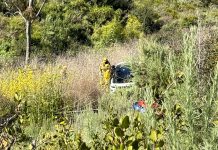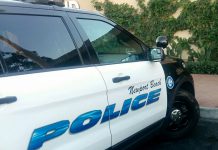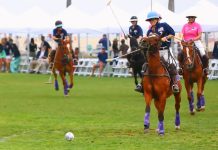Local and regional officials have recently been discussing copper in Newport Bay, a topic that has peaked the interest of boaters, environmentalists and local business owners.
The Water Quality Control Board, Santa Ana Region, held a public workshop Oct. 28 to discuss proposed basin plan amendments to incorporate Total Maximum Daily Loads for copper in Newport Bay. They also considered non-TMDL action plans for zinc, mercury, arsenic and chromium.
Most of the copper in the bay comes from the copper antifouling paint on boat hulls.
The TMDL regulatory order the board considered would require responsible parties to reduce copper in Newport Harbor by 83 percent from boat hulls within 15 years.
Board members had several concerns, including collecting more input from the public and stakeholders and the authority about restricting the type of paints used. Also, the boat owners aren’t happy with the alternative paint, added Water Board member Linda Ackerman.
“We certainly need to protect the water body, but I’m not sure that we’re there yet with the paint,” Ackerman said. “I can understand the need for it, but it seems that we have a lot of unanswered questions.”
A question raised that got a lot of attention during the meeting was about the accurate vessel count for Newport Harbor.
“A couple different people had a couple different numbers,” said Newport Beach Harbor Resources Manager Chris Miller when gave a report on the WQCB meeting to the Harbor Commission on Nov. 9.
Water Board staff considered a maximum capacity of 10,000 for their report, Miller said about 4,500 was more accurate, a local environmental group figured about 6,500, and others figured somewhere in between.
Miller recently decided “to finally put that issue to bed” and count every boat and determine the maximum capacity of Newport Harbor.
“We’re going through dock by dock, residential, mooring and commercial marinas, and count and measure,” each one, Miller said, as if every single dock had a vessel in it, which is unrealistic, but it’s what the Water Board was searching for, the maximum capacity.
Staff will use GIS programs to conduct the survey over the next month or so and staff anticipates to finish in early December. His previous number of 4,470 was based off an aerial photo from April 2015.
“It will be the closest thing we can come to being 100 percent accurate,” Miller said. “It will be the best survey that we can come up with knowing that there are many caveats.”
Defining a “vessel” can get pretty subjective and what counts as a space, said Commissioner Duncan McIntosh. It depends on the size and type, and many small boats are simply tied up at the end of some docks, he pointed out, and some of those don’t even have bottom paint on them.
Ideally, bottom paint will be a requisite to be included in the count (so dinghies and kayaks would be excluded), Miller explained. He still working out the details, like whether or not to include all the boats that could potentially be anchored in the east anchorage on a holiday weekend.
The lone supporter of the TMDLs during public comment at the regional Water Board meeting was Ray Hiemstra Associate Director of Orange County Coastkeeper.
They have done their own count and found 6,500 large boats and about 300 dinghies, Hiemstra noted.
The copper from all of those boat hulls have severely impacted the bay, he added.
The largest source of copper in the bay comes from the copper antifouling paint on boat hulls on both recreational and commercial boats, and the total area occupied by boats is “substantial,” said Linda Candelaria, from the Regional/Basin Planning Branch of the Santa Ana WQCB, during her presentation to the board in October.
“Our calculations show that about 36,000 pounds per year is discharged from boat hulls,” in Newport Harbor, Candelaria said. “This is the highest amount of pollutants that can come from boats in Newport Bay if every slip is filled.”
She called the estimate “conservative” and said it was based on 10,000 slips, a figure contested by the city and several public speakers.
“The TMDL must be implemented,” Hiemstra said. “That’s how things get done.”
There is an interest in this, Hiemstra said. The alternative paints have been proven in other harbors, he pointed out.
“Don’t plan on Coastkeeper entering into some long-term stakeholder process,” Hiemstra said.
They participate in the process when there is a set goal and are reasonable, he explained. This is just a delaying tactic, he added.
“This has been studied to death,” Hiemstra said. “We need to see action.”
There is a “tremendous” amount of misinformation and misunderstanding out there, he said.
Hiemstra suggested that the board return by March and settle this issue as soon as possible.
Other public speakers opposed the TMDL and action plans, saying they weren’t ready yet and that alternative paints have not been studied properly,
“You will be doing the wrong thing if you accelerate the TMDLs,” said Jesse Salem, owner and operator of Newport Harbor Shipyard.
It will chase away boaters and business, he added.
The alternative paints are either zinc, pharmaceutical, or silicone-based, he said. He asked for more time for the paint companies to develop better paints.
“There is no such thing as a nontoxic bottom paint,” Salem said. “That would be contradictory.”
They all want to preserve and enhance water quality, they just don’t agree with the Water Board staff on doing that with additional TMDLs, added John Marshall, member of South Shore Yacht Club in Newport Beach and Vice President South of Recreational Boaters of California.
“We have the same goals,” Marshall said. “We are stewards of our coastal waters.”
Water Board staff noted that the goal of the TMDLs and action plan is to identify the metals causing impairment to Upper and Lower Newport Bay, and to outline an implementation plan to reduce metal concentrations in and discharged to Newport Bay.
These hull paints discharge copper to prevent attachment of algae, barnacles and other fouling onto the boat, Candelaria explained.
“The problem is that the copper also affects other aquatic organisms, or as we call them, non-target organisms,” she said.
Copper can have sub-lethal effects on fish and lethal effects on invertebrates, she added.
“There are only so many ways to reduce copper from hull paints,” Candelaria said. “We can control the paint or we can control the discharge.”
The TMDL and action plans are a way to do that, she concluded.
Although the city of Newport Beach has some strong concerns. In a letter to the water board, the city of Newport Beach identified several of them, including that the copper TMDL unlawfully attempts to force local agencies to ban copper anti-fouling paint, the city points out in the letter. It is also unlawful because alternatives to copper anti-fouling paint are not effective or available. It also imposes unfunded state mandates that the state must reimburse under the California Constitution.
The city also states that it is improper to promulgate a TMDL for an entire bay when only certain areas of water bodies within the bay may even be arguably impaired.
The data sources the Water Board staff referenced in their report are more than a decade old, the city points out in the letter. There have been significant dredging activities in Upper and Lower Newport Bay since then.
There are many points that are “misrepresented,” NB Public Works Director Dave Webb said during the October meeting. The report is biased and misleading, added Assistant City Attorney Leonie Mulvihill. If action was taken on the Water Board’s plan as proposed it would likely result in litigation, she added.
They sometimes feel they are being “talked at” rather than being included in the discussion, Webb told the board members.
There are a lot of variables in play, Webb said, including tides, depth of channel, areas of concentration (that could possibly be moved around), and more.
Also, there are a number of problems with copper paint, Webb noted, including the time it takes to dry (which would slow down shipyard’s turnaround rate), cost (which could discourage people from boating) and it doesn’t last as long (which would also increased maintenance cost).
There are also other toxins in copper paint, like zinc, which could make the situation worse, Webb said.
“You could be switching one problem for another problem,” he said.
Harbor Commission Chairman Paul Blank spoke during public comment as a boat owner, not as a representative of the commission, and pointed out the cost and durability concerns.
Blank has coated his the hull of his 38-foot powerboat with non-copper paint twice and it didn’t meet his expectations either time, he said. The first time in 2014 it cost about $3,600 and only lasted seven months The second time earlier this year it cost $3,200 and failed in three months. Normally he pays about $2,400 for a coat that lasts about 18 months.
Other comments from city staff and public speakers included: More inclusive discussion is needed, water quality is already improving, it would discourage people from boating, and the consequences of the alternative paints have not been studied properly, among others.
Overall, there was a lot of feedback from the public to the Water Quality Control Board and they “downgraded” the item from a hearing to a workshop so they wouldn’t be required to make any decisions, Miller said last week.
“It was a very good conversation,” Miller said. “A lot of excellent points were brought up. And I do feel that the Water Board heard us.”
Although the board did not provide any direction or information on the next step, Miller is hopeful that they will re-evaluate their proposal and return at a later date with an alternative.




